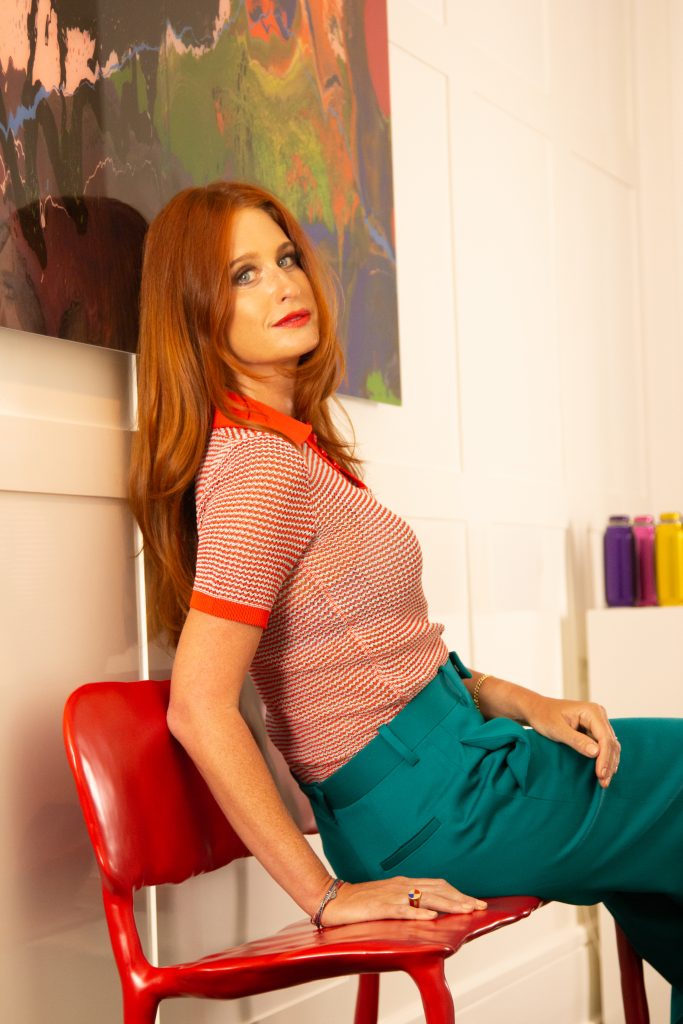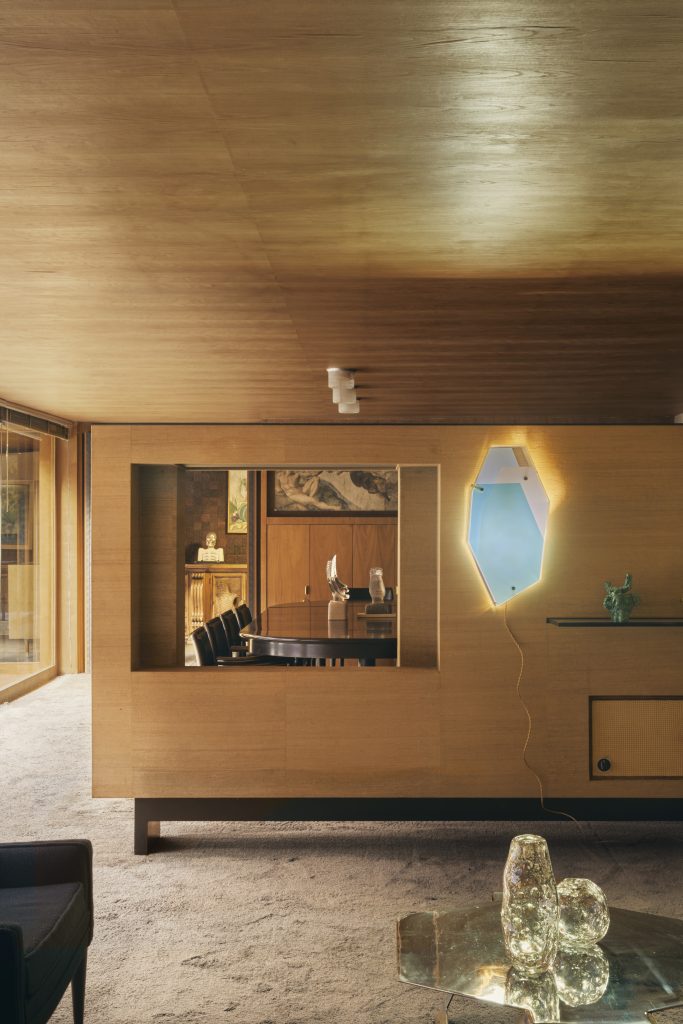MATERIAL 2023: “IMMATERIAL” Performance series
Engaging shows crafted to beguile, bemuse and bewitch audiences

Since its founding in 2013, Material Art Fair has been at the forefront of showcasing the latest and most innovative art during Mexico City‘s bustling art week. The fair’s dedication to nurturing emerging artists has led to the creation of a dynamic and sustainable art scene that stands in contrast to the impermanent, globally-oriented art events that take place during the city’s art week. Material further sets itself apart from the other fairs by offering the IMMATERIAL performance art program, extending its support beyond visual arts to represent a whole realm of the creative industry that is noticeably absent elsewhere.
IMMATERIAL came to fruition in 2017, when curator Michelangelo Miccolis pitched the idea of a performance program to the still-nascent Material. In Miccolis’ world, one is never merely a spectator. Drawing from his own background as a performer, Miccolis has curated programs that blend reality with its own suspension and with artists who can conjure a moment of collective fiction in collaboration with their audiences. This year’s events felt especially magical, as live audiences were in attendance for the first time since 2020. Below we revisit some highlights from IMMATERIAL Vol 6, and peek into the underground scene that the series has attracted.

SERAFINE1369’s “I I I (something flat, something cosmic, something endless)”
Pared down to its essence, choreography can be defined as time meeting with movement through space, in the infinite ways that equation can be hypostatized. And so Jamila Johnson-Small, performing as SERAFINE1369, opened this year’s IMMATERIAL series. Initially conceived for the Liverpool 2021 Biennial, “III (something flat, something cosmic, something endless)” presents reflexive excavations of the artist’s inner landscape while maneuvering through the timelessness of isolation. Much like Alejandro Jodorowsky’s Psychomagic—a shamanic therapy that combines art, poetry, and dreaming to heal psychic wounds—the body of work that is SERAFINE1369 is more divine alchemy than choreography.
Announcing the performance’s start time at “9 o’clock PM” and every minute thereafter, Johnson-Small’s voice beckons attendees toward the stage, a giant excavated swimming pool-turned-cactus garden behind PEANA Gallery. Following the voice as it charts planets through their celestial movements, the audience files into and around the pit, navigating by way of stars as humans have always done. But just as everyone finds their place, Johnson-Small begins to move as one among the crowd—not pushing through, but actually moving the crowd, which parts without resistance allowing the performer to carve their pathway forward. At first they walk backward, trusting that their steps will not trample those who stand behind. Face obscured by a hoodie, Johnson-Small’s figure in this articulation recalls the tarot’s Hermit card, an archetype that presents receptivity to an unknown future while holding all the secret wisdom of the past.
Over the next two hours, this wise body advances throughout the entire space, the movement oscillating energetically from a deliberate slow-drip to a sharp possession of space and back again. Johnson-Small’s durational ceremony is coupled with recordings of their dreams, anxieties and reflections, awash on an evolving soundscape, created by sound designer Josh Anio Grigg, that carries the intimacy of these thoughts upon crystalized rainfall, droning techno beats and a moment with Siouxsie and the Banshees. The piece creates a time loop that makes the audience witness the artist’s mind during lockdown, allowing them to fill the eerie void that paradoxically marked that period.

THE VAULT’s Nadie Ateriza
While Autumn Knight’s performance Sanity TV show was on as part of IMMATERIAL, Nadie Ateriza, one of the under-the-radar satellite shows paralleling the official festival series, occurred at The Vault, an underground art house and performance space dedicated to experimental creative practices. The show packed a full house with a line of art punks waiting for entry snaking out the front door. It was a relief to find the roughness around the edges of the art fairs, in a DIY scene that makes visible the collaborative, community-oriented spirit that ultimately acts as the foundational infrastructure for the established art world at large. This ethos was especially important to the curators; Daniela Orzoco of Red Generación Espontánea told us that working locally allows for creating site-specific installations that simply cannot happen in conventional fair spaces, while Cuaco Navarro of Save the Artist notes the necessity of promoting creatives that challenge established industry players and their ideas.
The performances that evening were appropriately raw in their experiments. Nayeli Santos and Cuaco Navarro presented “After Life is Survival,” a “performance exercise in collaborative process” that featured the duo as they navigated the perils of supporting each other. From various states of confinement Santos and Navarro passed each other barbed emotions written on oranges, often bearing the burden of holding as many of the bitter fruits as possible upon receipt. How do we move forward while holding feelings such as “wretched, dehumanized, gutted” if carrying them literally impedes us from walking? What happens when we ask, or force, others to hold this grief for us? Santos and Navarro play precarious movement games throughout, pulling the audience into the same feelings of urgency and futility experienced by the players. It’s a contraction that seems to happen readily in parallel spaces such as The Vault, where people don’t know what they’re getting into when they walk through the front door, but are eager to participate in whatever it is.

Dora García’s “La Esfinge (The Sphinx)”
The importance of the Sphinx in mythology lies in its representation of mystery, protection and wisdom. Guarding an empire through a deadly game of riddles, she demonstrates the power of knowledge and intellect (qualities often associated with the feminine) as forces that cannot be fought with brute strength. Fittingly, we find Dora García’s “Sphinx” (played by Issa Téllez) roaming among exhibitions exploring the historical relationship between feminist movements and political revolution currently on view at Laboratorio Arte Alameda.
This Sphinx is a beautiful wandering woman draped in green, who seems more interested in the museum visitors than the art itself. At first glance, one does not know that she is the art, but then she breaks from wandering to approach you with her game of riddles. To those who play, she poses a litany of questions starting with “Are you in love?” It’s a startling intro to a game which, according to the Sphinx’s rules, has only right or wrong answers. Answer incorrectly, you lose and the game ends. The questions increase in complexity, focusing on preconceived notions of gender, Western philosophical thought and self-reflection. It becomes impossible to respond correctly, and losing the game may leave you more puzzled than when the Sphinx first approached. García regularly uses literary archetypes to confront reality, often implicating her audience in these explorations. The futility of needing to be “correct” within the often contradictory nature of political movements, the despair of being forced to doubt your belief systems in order to move forward, the enigma of what could be opened to us if only we possessed wisdom as embodied by a feminist ideal (itself also a mystery), are all endured in the few precious moments that the Sphinx holds you captive.
Hero image of SERAFINE1369’s “I I I (something flat, something cosmic, something endless)” courtesy of Ivan Meza












